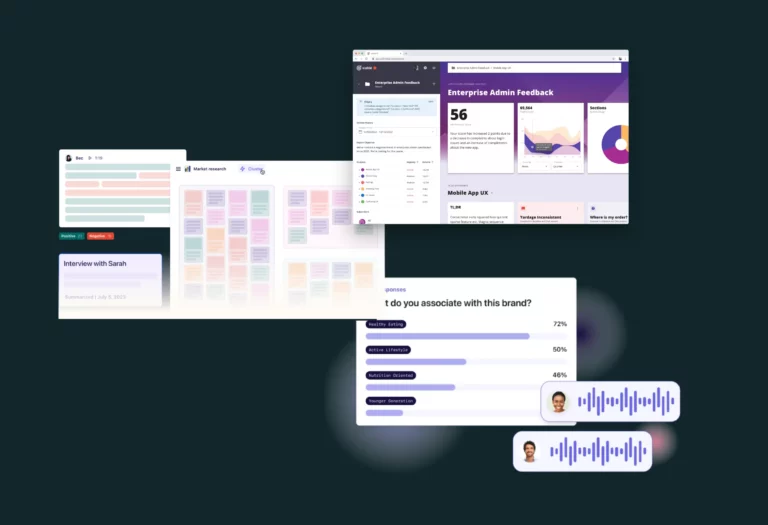But first: what is Insights?
A business insight combines data and analysis to find meaning in and increase understanding of a situation, resulting in some competitive advantage for your business. This provides more than low-level understanding of an issue, giving you deeper insight into major mechanics related to your particular business. The steps involved in creating business insights include setting the context of the situation and communicating the dilemma clearly to all members of the discussion.
After that, you should be able to state why something actually occurs in reality and potentially uncover some of the motivations that drive consumer behavior related to the insight.
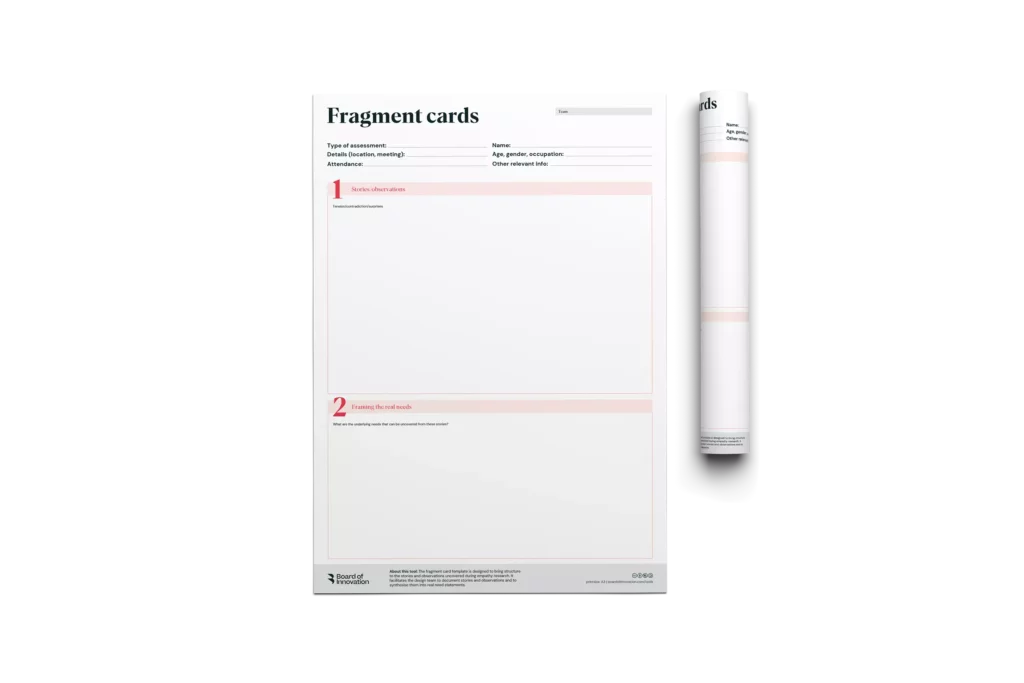
Fragment cards
This fragment card template is designed to document stories and observations uncovered during an empathy research session. It facilitates the design team to synthesize the stories and observations and frame them into real need statements.
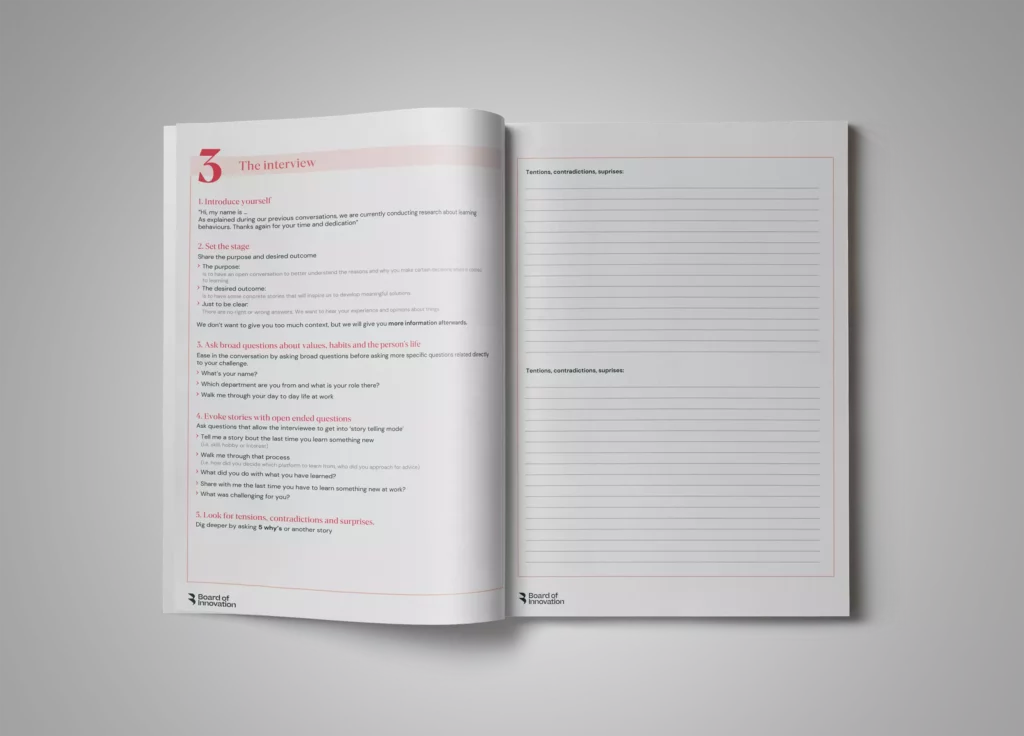
Empathy interview guide
The interview guide is a tool designed to guide you during your first interviews with the customer or end users to better understand the right problems to solve. It’s the starting point of your empathy journey. Highly recommended before jumping into ideation.
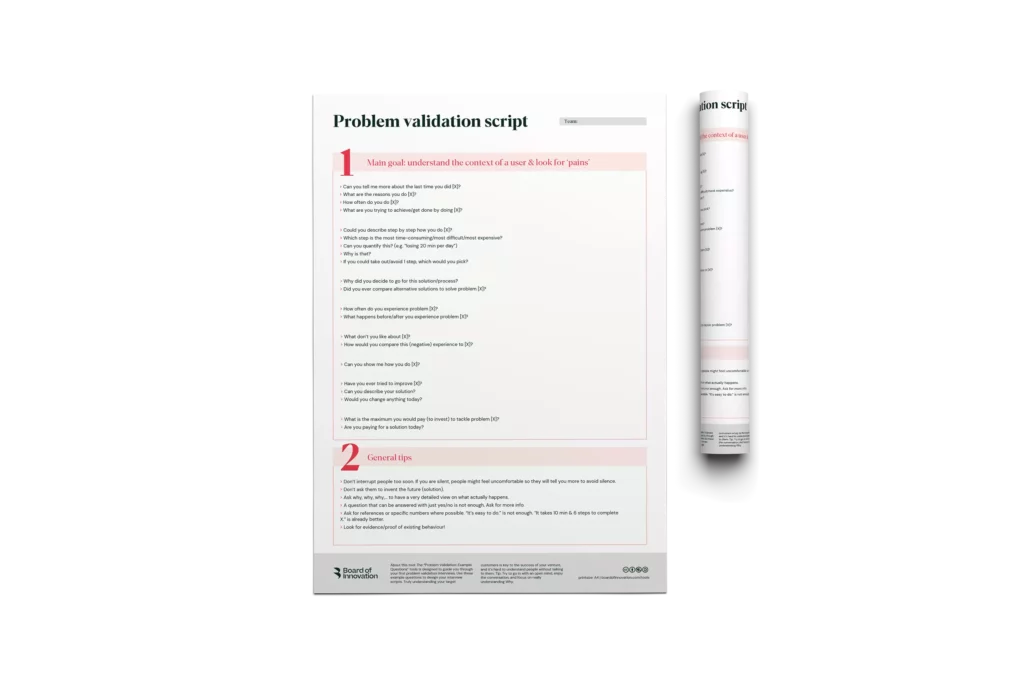
Problem validation script
The problem validation questions is a tool to help you conduct your first customer interviews.
Interacting with customers is a crucial part of the problem exploration phase. The problem validation script will give you the sample questions and pointers you need to get the most insight out of it.
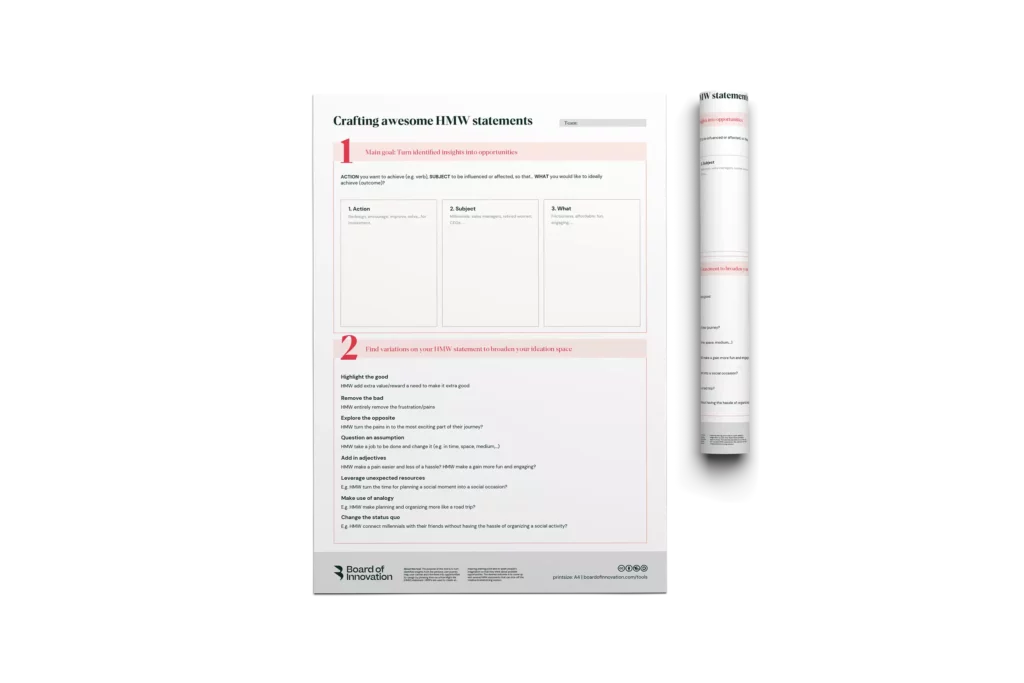
How might we statement builder
The How Might We statement builder is a tool that allows you to explore potential innovation theses. It’s the perfect way to start with your solution development.
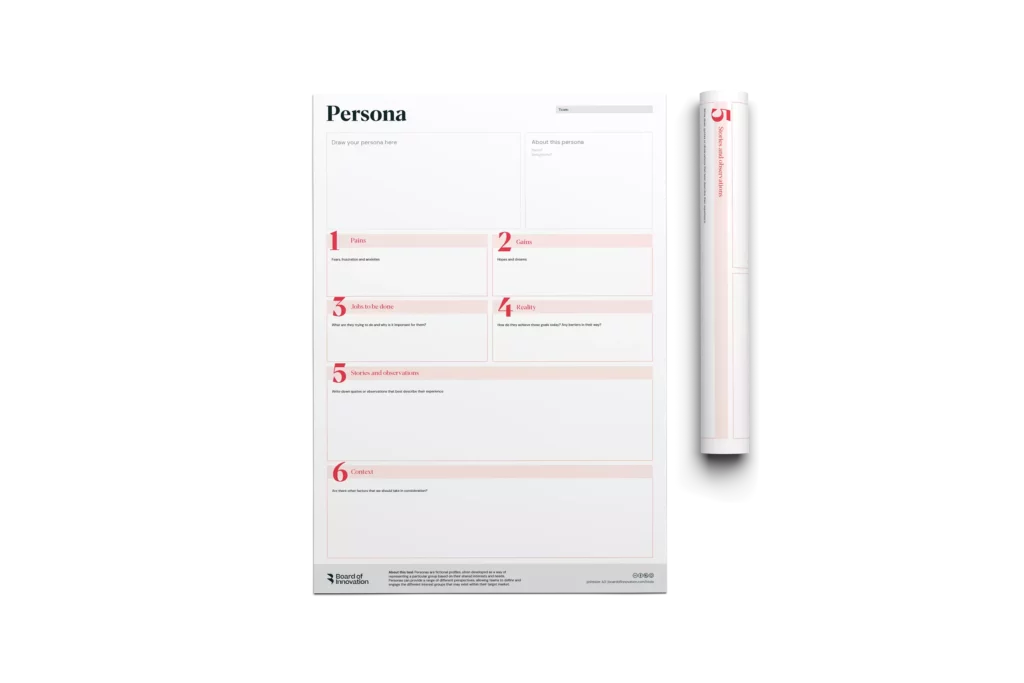
Persona
The persona is a tool designed to help you visualize and better understand your customer segment. It is the starting point of your problem exploration journey.
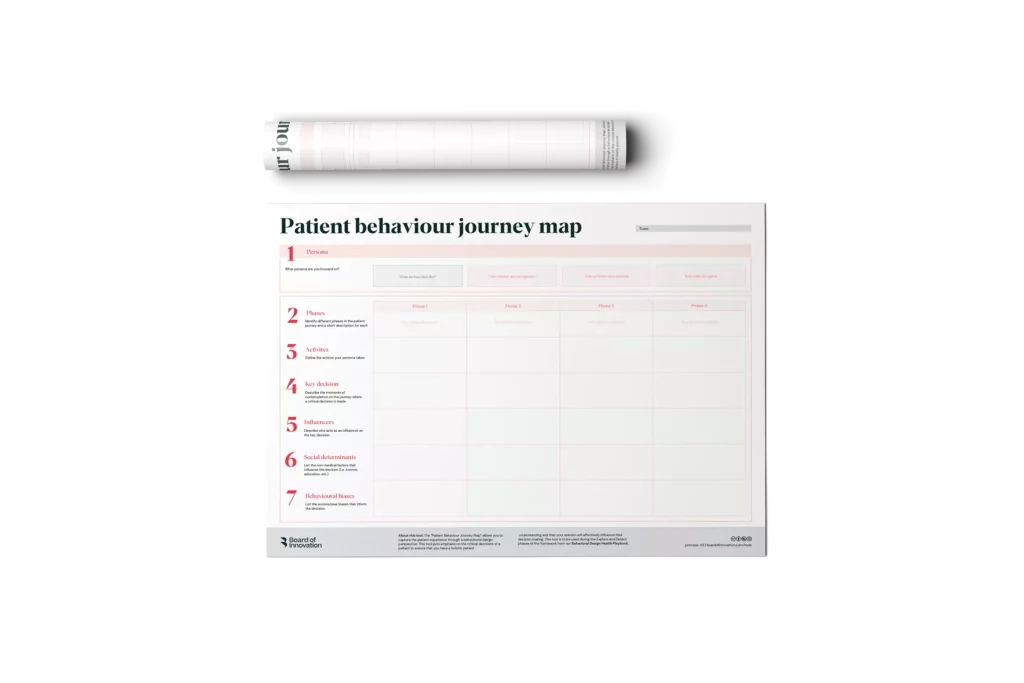
Patient behaviour journey map
Capture the patient experience through a behavioral design perspective. This tool puts emphasis on the critical decisions of a patient to ensure that you have a holistic patient understanding and that your solutions will effectively influence decision making.
The Patient Behavior Journey Map is designed for you to capture the activities, decisions, influencers of patients. It is also to be used to identify the unknowns and areas of uncertainty to trigger additional exploration.
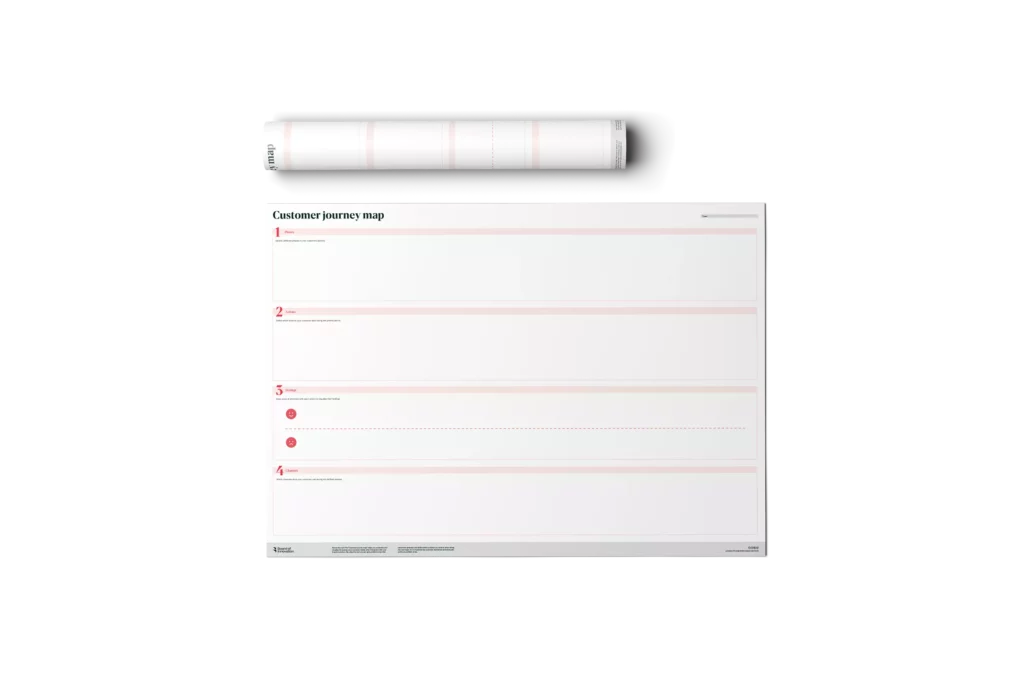
Customer journey map
Possibly the most famous design thinking tool, a customer journey map allows you to reconsider the interaction with your products or services from the customer’s perspective.
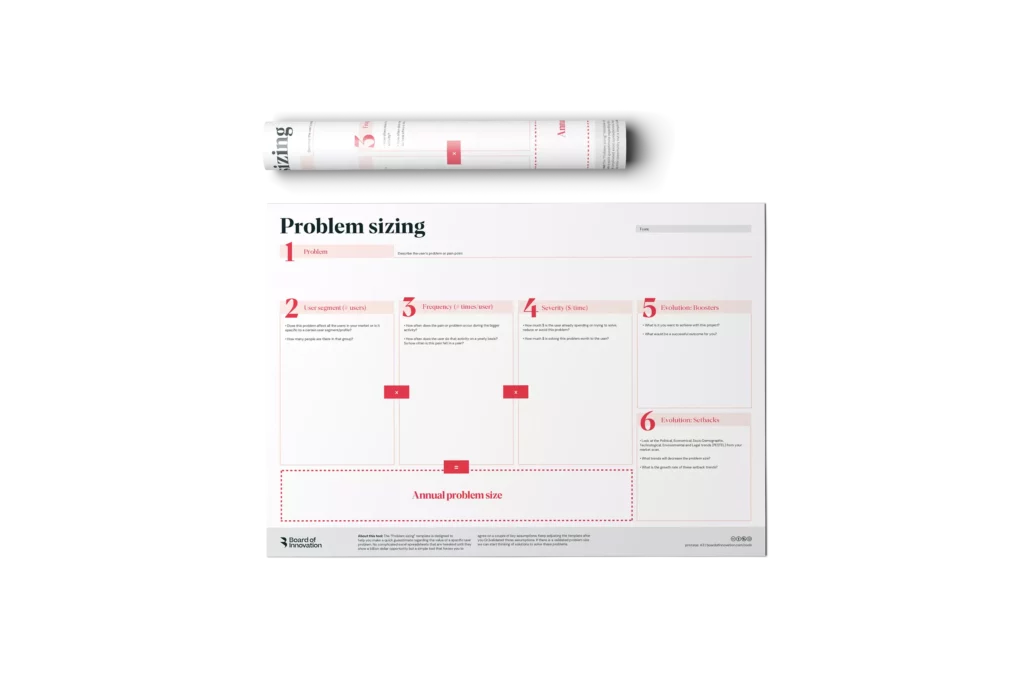
Problem sizing canvas
The problem sizing canvas will help you make a quick guesstimate regarding the value of a specific customer problem. Will producing a solution to this problem delight your customers? Will eliminating this pain point make them want to use your product or service? Would they be willing to pay for it?
Rather than create complicated spreadsheets that are tweaked until they show a billion dollar opportunity, this simple tool will save you time by forcing your team to agree on a couple of key assumptions. Keep adjusting the template after you’ve (in)validated those assumptions.
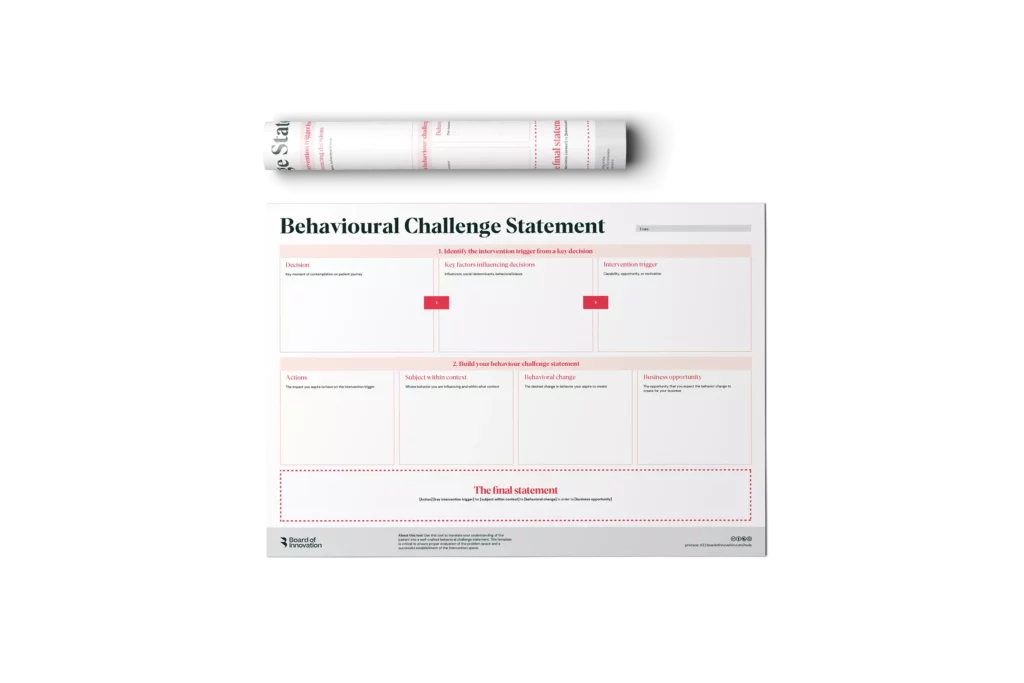
Behavioral challenge statement builder
The Behavioral Challenge Statement Builder tool is designed to connect learnings from behavioral design research into a useful statement to help scope the intervention space. Without it, you run the risk of creating solutions that might disregard the behavioral aspects to a person’s activities and decision making.

